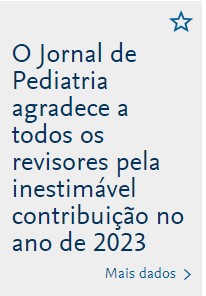To establish the influence of late‐onset sepsis on neurodevelopment of preterm infants with very low birth weight (VLBW), according to the etiologic agent.
MethodThis was a cohort of newborns with birth weight < 1,500g and gestational age less than 32 weeks, admitted to the institutional intensive care unit (ICU) with up to 48hours of life, and followed‐up at the outpatient follow‐up clinic for preterm infants with VLBW until 2 years of corrected age. Exclusion criteria: death within the first 72hours of life, congenital malformations and genetic syndromes, children with congenital infection by the human immunodeficiency virus (HIV), congenital infection (STORCH), presence of early‐onset spesis and cases with more than one pathogen growth in blood cultures. Septic and non‐septic infants were compared regarding neonatal outcomes and mortality. Neurodevelopment was assessed using the Bayley Scale (BSDI‐II) at 18 to 24 months of corrected age.
Results411 preterm infants with VLBW were eligible; the mean gestational age was 29
± 2.2 weeks and mean birth weight was 1,041 ± 281grams. Late‐onset sepsis occurred in 94 preterm infants with VLBW (22.8%). VLBW infants with Gram‐positive infection showed motor deficit when compared to the non‐septic group, 68.8% vs. 29.3%, respectively (OR 6; 1.6‐21.8, p = 0.006); the cognitive development was similar between the groups. The overall mortality rate from infection was 26.7%; considering the pathogens, the rates were 18.7% for coagulase‐negative Staphylococcus, 21.8% for Gram‐positive bacteria, and 50% for Gram‐negative bacteria and fungi.
ConclusionNeonatal sepsis has a significant influence on late neurodevelopment at 2 years of corrected age in preterm infants with VLBW, and Gram‐positive infections are associated with motor deficit.
Estabelecer a influência da sepse tardia no neurodesenvolvimento de prematu‐ ros de muito baixo peso (MBP) recém‐nascidos (RNs) de acordo com o agente etiológico.
MétodosCoorte de RN com peso de nascimento < 1.500g e idade gestacional < 32 semanas,internados na UTI da instituição dentro de 48 horas de vida, e atendidos no ambulatório de MBP para até dois anos de idade corrigida. Foram excluídos: a morte nas primeiras 72h de vida, malformações congênitas e síndromes genéticas, filhos de mães HIV‐positivas e infecção congênita, presença de sepse precoce, e os casos com mais de um microorganismo identificado em hemoculturas. RNs sépticos e não sépticos foram comparados quanto resultados neonatais, mortalidade e neurodesenvolvimento avalia‐ dos através das escalas Bayley (BSDI‐II) aos 18‐24 meses de idade corrigida.
ResultadosUm total de 411 RNs prematuros de muito baixo peso eram elegíveis, com idade gestacional = 29 ± 2,2 semanas e peso de nascimento = 1.041 ± 281g. Sepse tardia ocorreu em 94 casos (22,8%). MBP RN com infecção causada por microrganismos Gram‐positivos apresentaram atraso motor, quando comparado com o grupo sem sépsis ‐ 68,8% vs 29,3% (OR 6; 1,6‐21,8,p = 0,006), e atraso cognitivo, foi semelhante. Taxa de mortalidade global de infecção foi de 26,7%, e as taxas de mortalidade por grupo micro‐ organismo foram: Staphylococcus coagulase negativa, 18,7%; Gram‐positivos, 21,8%; Gram‐negativas e fungos, 50%.
ConclusãoA sepse neonatal tem uma influência significativa no atraso no desenvolvi‐ mento neuropsicomotor aos dois anos de idade corrigida em prematuros de muito baixo peso RN e as infecções por germes gram‐positivos estão associadas com atraso motor.
Como citar este artigo: Hentges CR, Silveira RC, Procianoy RS, Carvalho CG, Filipouski GR, Fuentefria RN, et al. Association of late‐onset neonatal sepsis with late neurodevelopment in the first two years of life of preterm infants with very low birth weight. J Pediatr (Rio J). 2014;90:50‐7.









